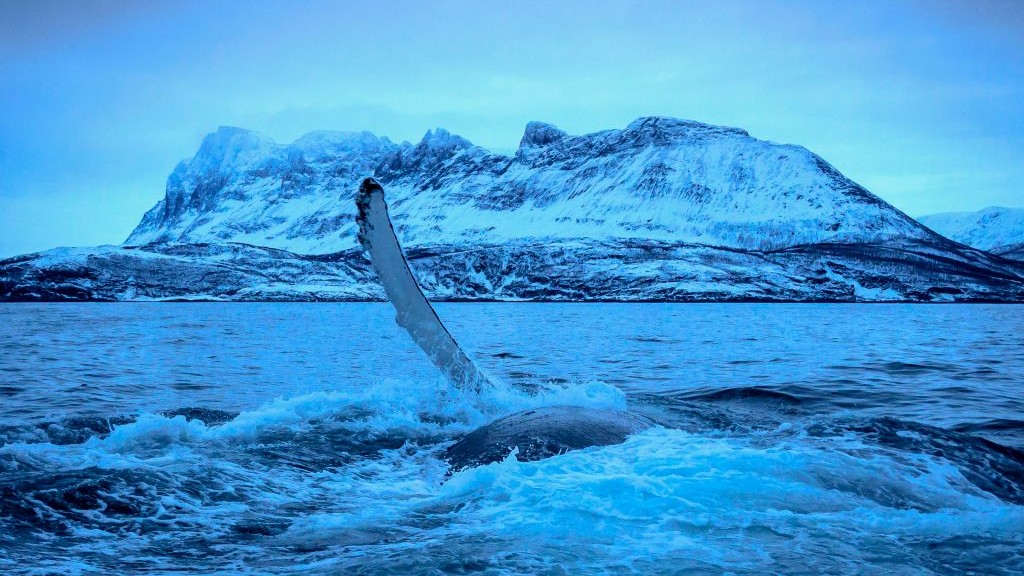Marine ecosystem off Southeast Greenland may have crossed tipping point, says study

“The disappearance of the drift-ice may represent a regime transition across a tipping point with cascading consequences for the local ecosystem including a shift in biodiversity and ecosystem functioning,” said the study in the journal Global Change Biology.
“The changes seen in SEG could, therefore, be a forerunner of ecological events expected if another, and larger, tipping element, summer Arctic Ocean ice disappears in future decades.”
Regime shift is not just something we wish for in certain countries but it is also a change in ecological conditions driven by a physical force. Read about how long-range climatic conditions changes ecology of southeast Greenland waters. https://t.co/KsXa2lJe3T  pic.twitter.com/BMUpxZgqho
— Mads Peter Heide-Jørgensen (@mads_heide) November 21, 2022
“Regime shift is not just something we wish for in certain countries but it is also a change in ecological conditions driven by a physical force,” Mads Peter Heide-Jørgensen, the study’s lead author, tweeted on Monday.
Changing ice conditions, changing ecosystem
Drift-ice and coastal pack ice have long isolated this region of Greenland and was a barrier to exploration of the region and prevented whalers from following animals towards the shore, the researchers say.
But the low temperatures and extensive sea ice that marked this region’s habit is changing as the climate warms, the scientists said.
“Conditions that were previously dominant (extensive summer drift-ice and low temperatures) are now rare, suggesting a tipping point involving summer ice coverage has been crossed and a new state with open water in summer has been reached,” the study said.

Among the changes being observed are an increase of killer whales in the region.
Between 1942–1984, there were eight recorded observations of killer whales, in the area of Tasiilaq, a Greenlandic community that today numbers around 2,000 people. In the period of between 1950-1986, there were three recorded catches.
This is in stark contrast to the 2003–2018 period when at least 77 killer whales were caught, the study said.
Species expanding their range
The study also highlighted the increased presence of fin whales in the region.
“A large number of fin whales were unexpectedly found in the coastal waters of East Greenland (<50 km from shore) in August 2015; a fully corrected abundance estimate showed that there were 6440 fin whales in the region, even though there is little or no historical evidence of fin whales in coastal waters of East Greenland,” the researchers said.
The fin whales are among many different predators and pray, increasingly found in the area.
“Several large mobile predator species are expanding their ranges into new habitats,” the study says. “The presence of these species is likely having direct and indirect effects on other species in the community and on biodiversity–function relationships of the food web. Many of these species occupy high levels in the food web and their consumption will probably impact prey and have cascading effects to lower trophic levels in food webs.”

At the same time, the number of species that are ice-dependent or cold-tolerant will decline as ice conditions decrease.
Narwhal is just one example, the study said.
“There is evidence that narwhals have a narrow temperature niche of 0.3–1.3°C where most of their diving and feeding activities takes place,” the researchers said. “Only areas dominated by the [East Greenland Current} seem to be suitable habitat for narwhals and areas with influx of dense and warm Atlantic water masses seem unsuitable, which will likely lead to a substantial habitat loss for such populations due to climate change.
“The observed changes in [Southeastern Greenland] demonstrate that a regime shift has occurred and are likely to be the first signal of what will become an increasingly common scenario in the Arctic.”
The study was led by Greenland Institute of Natural Resources.
Write to Eilís at eilis.quinn@cbc.ca
Related stories from around the North:
Canada: Continued sea ice loss could alter food web for some Arctic marine predators, says Canadian study, Eye on the Arctic
Russia: After a month stuck in Arctic sea ice, nine vessels make it to Kara Sea, The Independent Barents Observer
Norway: 2020 shaping up to have second lowest Arctic sea ice extent on record, The Independent Barents Observer
United States: Bering Sea ice at lowest extent in at least 5,500 years, study says, Alaska Public Media
,



